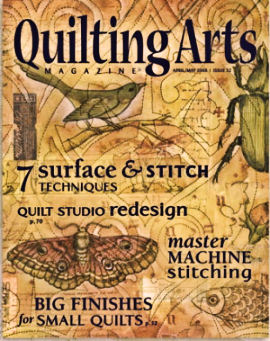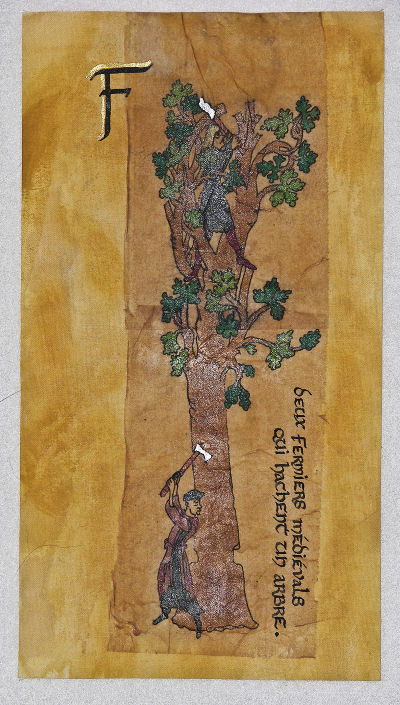
The king, minus the phrase to the
right, and the big R, upper left.
6 x 9.
The camera flash is adding a glare
that isn't present to the naked eye.
|
Day 3, Oops! :
Today begins with a horrifying realization. I check to make sure the ink on the calligraphy is dry, and it not only comes off on my finger, but smears!. This is strange, because the colored ink on the figure is intact and dry. It dawns on me that the colored inks I painted with are Tsukineko inks, preferred by textile artists ( get them at Soft Expressions online ) and the ink in the calligraphy pen is a cartridge - likely a good quality "india" ink, but specific to calligraphy and paper arts. Oh,no!
If I put a final coat of acrylic medium on to protect it, the water base of the acrylic will smear the ink in the calligraphy ( I have already brushed it over the colored figures, and that was okay ). I take a break to ponder my next move.
Later, when I return to the sewing room, one of the little blocks - the little medieval singing king - has fallen from the windowsill where it was drying. My blue heeler Sheila, a.k.a. Satan on Four Legs, has learned that fabric is great to munch on ( especially when one pulls it out of the trash behind Mom's back ). And so before I can notice, she is happily licking the KING! Well, it didn't hurt it, except that the calligraphed phrase came off! Completely, except for the first two little words!. Lucky for Sheila, I was thrilled by this. It didn't smear, just washed off. So I could redo it easily. And meanwhile something better : I hadn't liked the way the big "R" initial looked - smaller than the ones on the other two blocks. Now, I suspected I could get it off too, and do the whole thing over, leaving the king and the block intact.
|




